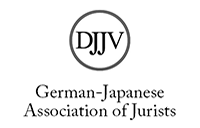The Protection of Cultural Properties in Japan (1)
Abstract
Introductory Note by Stacey Steele
PART ONE
I. Introduction
II. The Political Perception of Culture and the Arts from the Late 18th to the Mid-19th Century, from the Bakumatsu to Meiji Restoration
The Abolition of Feudalism and Meiji Reforms: Consequences for Cultural Heritage
III. The Birth and Evolution of the New Ideology of Culture in Meiji Strategies of Political Pragmatism
1. The First Period of Internationalization of Japan: the Contribution of the Iwakura Diplomatic Mission of 1871-73 to the Views of Art and Artistic Culture
2. Aims and Results of the Surveys of Japan’s Cultural Heritage Guided and Sponsored by the State in the 1870s and 1880s
3. The Re-evaluation of the Feudal Past and the Birth of the “Edo period”, a New Historical and Cultural Entity, at the End of the 1880s
IV. The Western Influence on the Art Productions, the Art History, and the Scientific Culture of the Meiji Period
1. The Contribution of “Hired Foreigners” to Modernisation and the Introduction of Western Art Techniques
2. The Birth of Scientific Archaeology: Edward Sylvester Morse and William Gowland
3. The Historical and Aesthetic Re-evaluation of Japanese Art Traditions: Ernest Francisco Fenollosa and Okakura Tenshin
V. The First Half of the 20th Century
1. The Mingei Undô Movement for the Folk Crafts
2. Summary of the Legislation Relating to Cultural Properties and National Heritage Between the two World Wars and after World War II until 1950
PART TWO**
[VI. The Second Half of the 20th Century and the Beginning of the 21st: Contemporary Japanese Policies on the Protection of Cultural Properties, 1950-2004
VII. Contemporary Japan’s Policies Promoting Cooperation and International Exchange in the Field of Cultural Properties]
** Part Two will be published separately in the next issue of the Journal.






